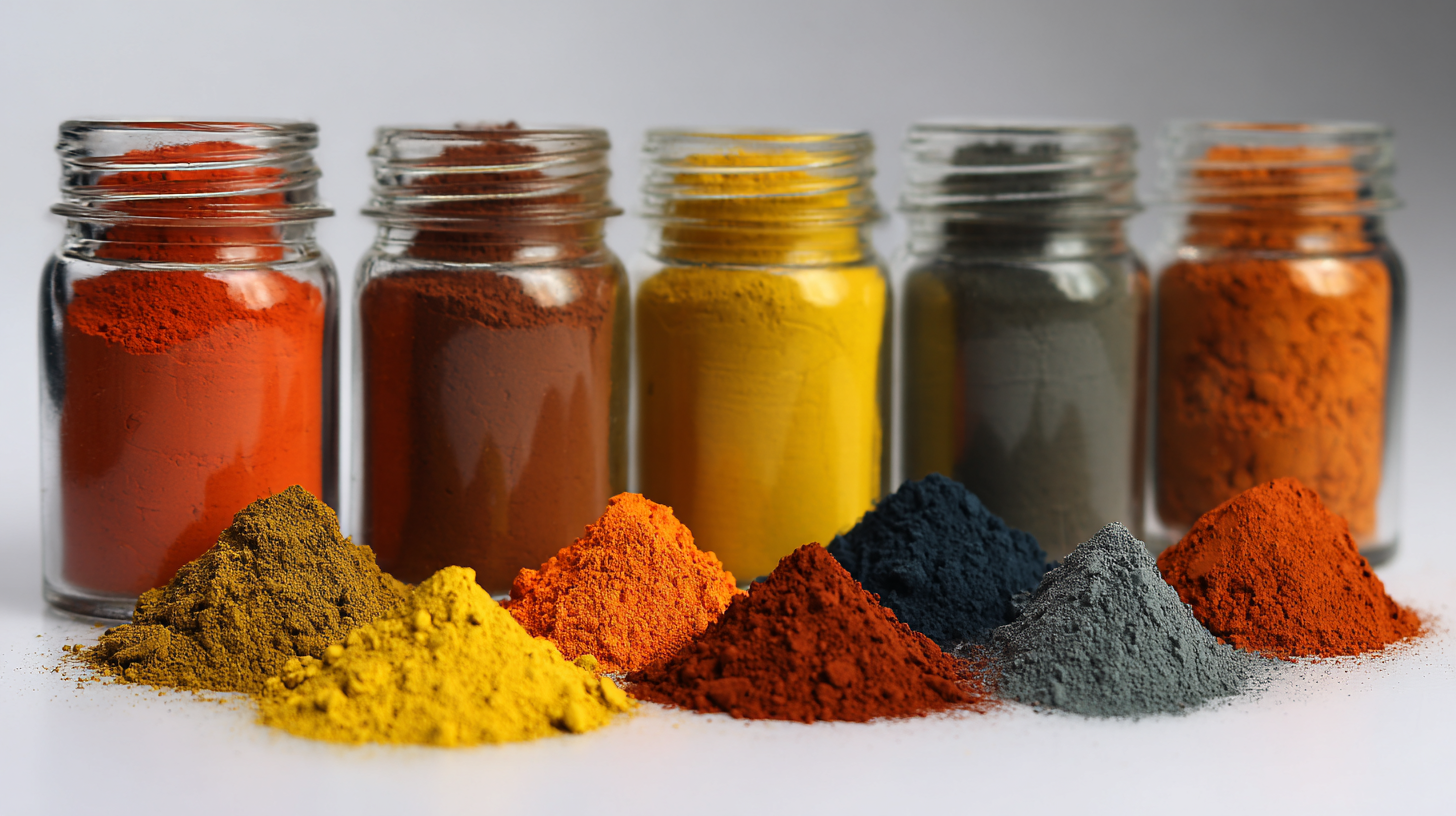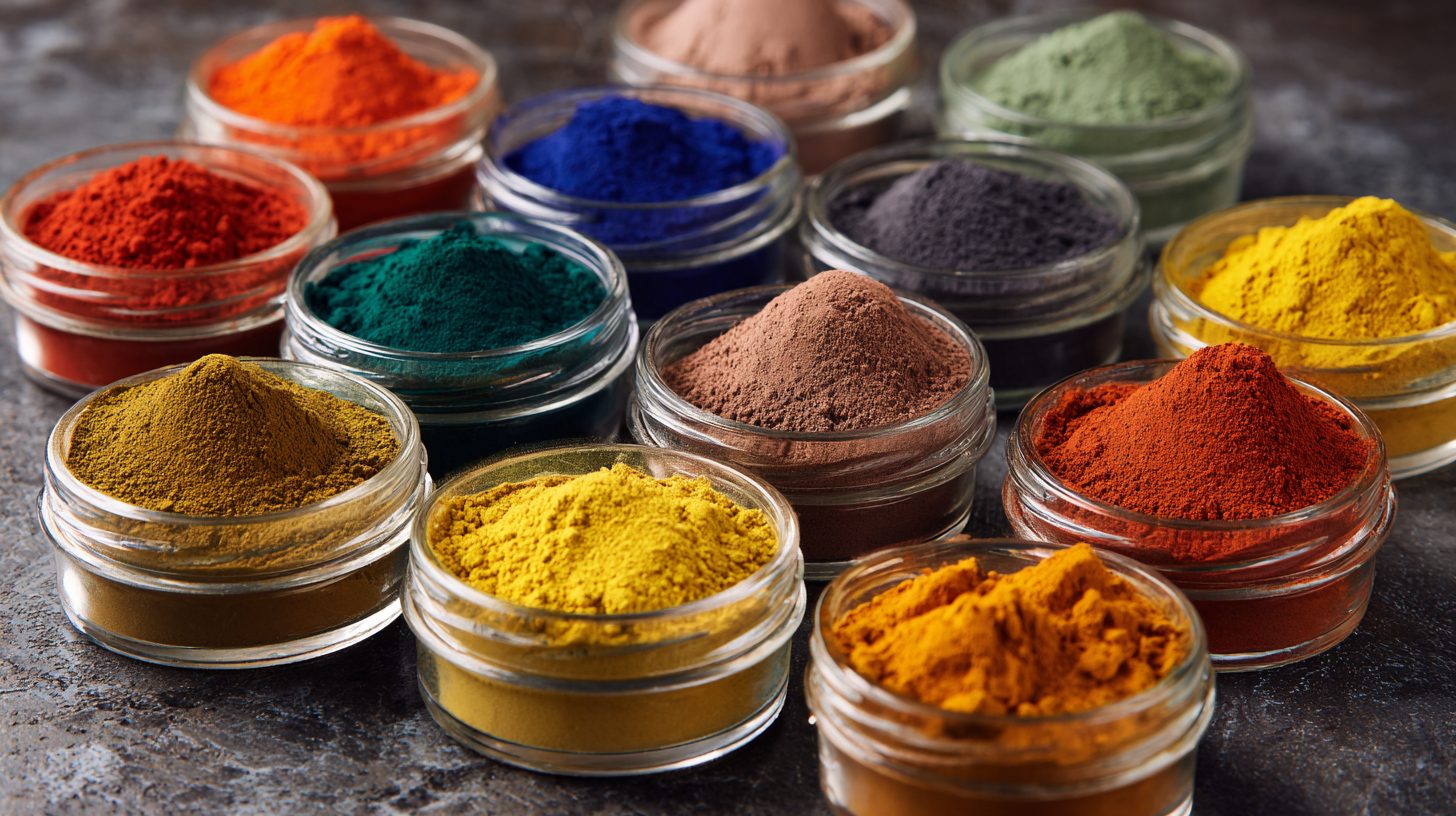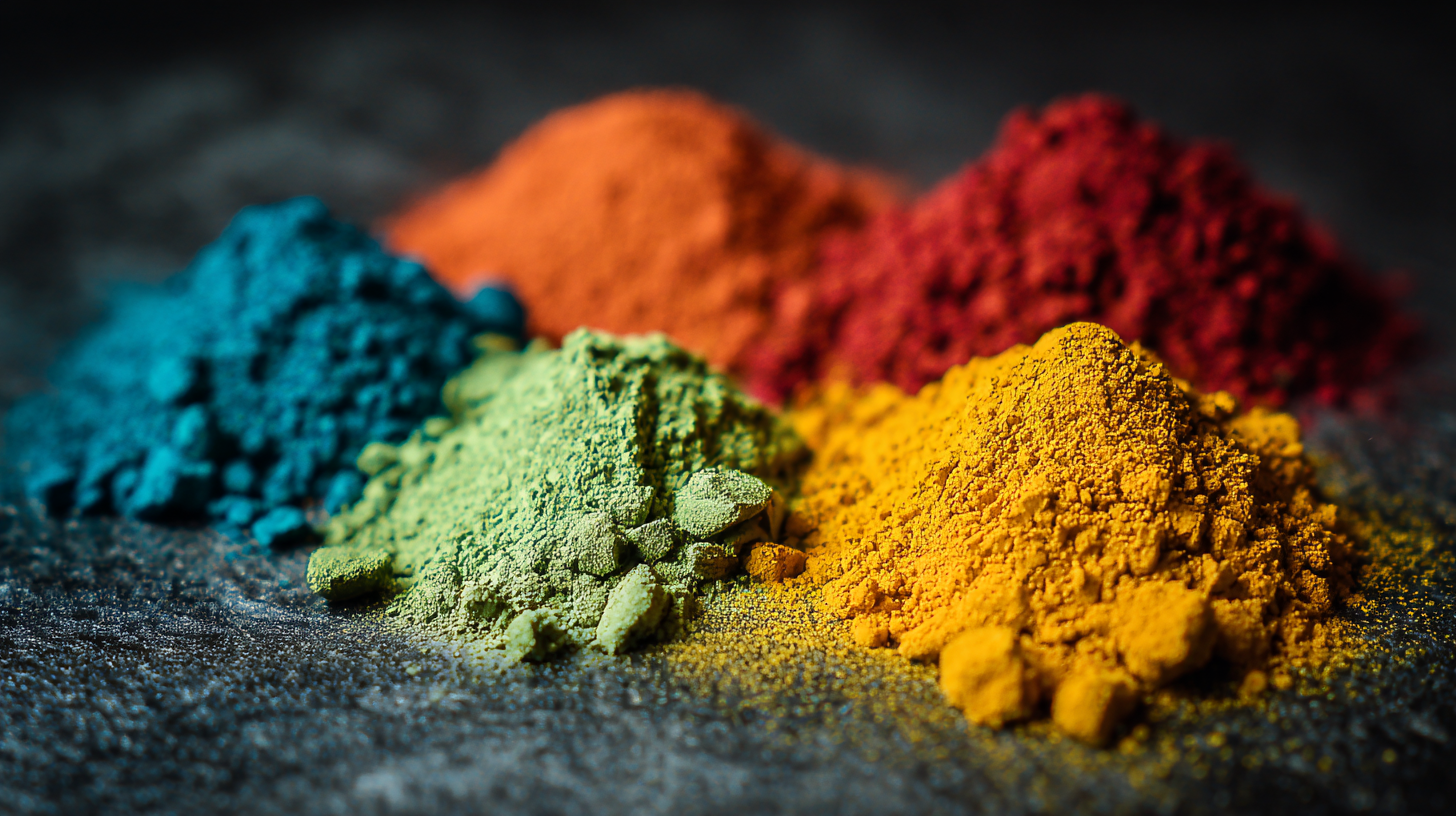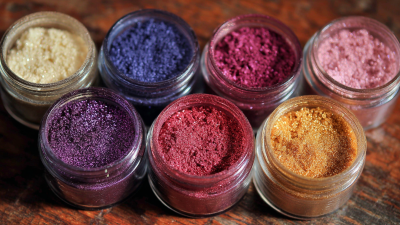In the realm of epoxy applications, the right choice of pigment powder is crucial for achieving optimal aesthetic and performance results. According to a report by the Global Pigment Industry Association, the market for specialty pigments, including those used in epoxy systems, is projected to reach USD 5.4 billion by 2026, driven by the increased demand for high-quality coatings and decorative finishes. Selecting the proper pigment powder for epoxy not only enhances the visual appeal but also affects the durability and stability of the final product.

Factors such as colorfastness, particle size, and compatibility with resin systems must be carefully considered. With the growing popularity of DIY projects and the rising trend in custom epoxy creations, understanding how to navigate the myriad options of pigment powders available is essential for both professionals and hobbyists alike.
This guide will provide essential insights into choosing the right pigment powder for epoxy applications.
When it comes to selecting the right pigment powder for epoxy applications, understanding the different types available can make all the difference. Pigment powders used in epoxy formulations can be broadly categorized into organic, inorganic, and hybrid pigments. Organic pigments, known for their vibrant colors, are often favored for their ease of dispersion in resin systems. However, they may not always provide the same level of lightfastness or durability as inorganic counterparts.
On the other hand, inorganic pigments, which are typically derived from mineral sources, offer superior durability and resistance to environmental factors, making them ideal for outdoor applications. The emerging field of hybrid pigments combines the best of both worlds, merging organic and inorganic materials to achieve novel color properties while improving performance metrics. This innovation not only enhances the aesthetic appeal of epoxy products but also addresses environmental considerations, as these hybrid pigments often require less harmful additives. Understanding these distinctions is crucial for making informed choices and achieving optimal results in your epoxy projects.

When selecting the right pigment powder for epoxy applications, several key factors must be considered to ensure optimal results. The first factor is color fastness; it's essential to choose pigments that can withstand UV exposure and environmental conditions without fading. Checking the manufacturer’s specifications for lightfastness ratings can help you select a durable color that will look vibrant over time. Additionally, consider whether you need a transparent or opaque pigment, as this affects the final appearance of your epoxy project.
Another critical aspect is the pigment's compatibility with the epoxy resin you're using. Not all pigment powders mix well with every type of epoxy, so it’s vital to verify that the chosen pigment is specifically designed for epoxy applications. This ensures proper dispersion and minimizes issues such as clumping or settling. Lastly, evaluate the particle size of the pigment. Finer powders often achieve a smoother finish, while coarser pigments can create texture. Balancing these factors will lead you to the perfect pigment choice that meets both aesthetic and functional needs for your epoxy project.
This chart illustrates the key factors to consider when selecting pigment powders for epoxy applications based on user preferences and project requirements.
When selecting pigment powders for epoxy applications, it's crucial to ensure compatibility for optimal performance and aesthetic results. According to a report by the Industrial Pigment Association, the right pigment can enhance clarity and durability, significantly influencing the final product's quality. To effectively test pigment powders' compatibility with epoxy resin, consider the following tips.
First, always conduct a small-scale test before large-scale mixing. Mix a small batch of epoxy resin with the chosen pigment powder, observing for any separation or settling that may indicate incompatibility. Additionally, check for effects on curing times; some pigments can alter the chemical reaction rate of epoxy resins, leading to improper curing and compromised integrity.
Moreover, analyze the pigment's particle size and dispersion characteristics. Reports suggest that finer particles often provide better color saturation and uniform dispersion in epoxy, minimizing issues like clumping. It's also useful to consult supplier data sheets which often include information on recommended usage levels and compatibility references. By following these tips, you can ensure the successful integration of pigment powders into your epoxy projects, achieving vibrant and durable finishes.
When selecting the right pigment powder for epoxy applications, it's essential to understand how different pigments can influence color and opacity. The latest advancements in pigment technology, including the development of hybrid pigments that combine organic and inorganic materials, are revolutionizing color properties. According to a recent study, hybrid pigments can offer a broader range of colors and improved performance in various applications. This innovation allows for greater customization in achieving specific hue and opacity requirements, catering to the growing demands of the market.
In the color cosmetics industry, the global market is projected to reach USD 77.7 billion by 2020, highlighting the increasing consumer interest in personalized products. The choice of pigment is crucial in this sector as it directly affects the visual appeal and quality of the final product. By selecting the appropriate pigment powders, manufacturers can ensure that their epoxy products not only meet aesthetic expectations but also comply with safety and environmental standards. As the trend towards sustainability continues, understanding the environmental impact of pigments will also guide decisions in formulation, leading to better choices that align with consumer preferences and regulatory demands.
| Color | Opacity | Best Use Case | Mixing Ratio | Recommended Binder |
|---|---|---|---|---|
| Red | High | Artistic Coatings | 5% - 10% | Epoxy Resin |
| Blue | Medium | Flooring Applications | 3% - 7% | Polyester Resin |
| Green | Low | Artistic Effects | 1% - 5% | Acrylic Resin |
| Yellow | Medium | Marine Applications | 4% - 8% | Vinyl Ester Resin |
When selecting pigment powders for epoxy applications, avoiding common mistakes can significantly enhance your project outcome. One major pitfall is not considering the compatibility of the pigment with the epoxy resin. Certain pigments may not blend well and can lead to separation or settling. Always check the manufacturer's guidelines to ensure compatibility for a smooth finish.

Another mistake often made is overlooking the importance of opacity. Some pigments may appear vibrant but have low coverage, requiring more material and potentially altering the desired color. Choose dense and opaque pigments for greater efficiency and a more uniform color throughout your epoxy work.
Tip: Test small batches before committing to any pigment. This practice allows you to see how the color interacts with the epoxy and any potential changes during the curing process. Additionally, keep records of your ratios and results to refine your selections in future projects. By being mindful of these considerations, you will achieve not only better color but also improved durability in your epoxy applications.






